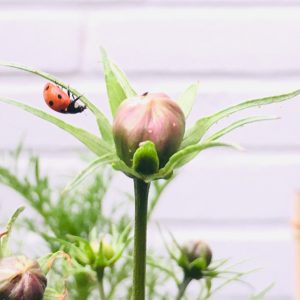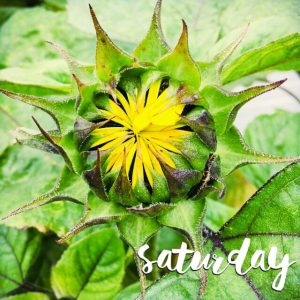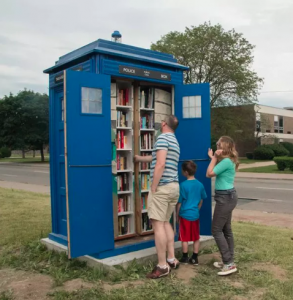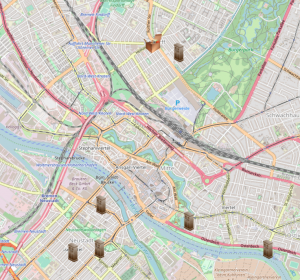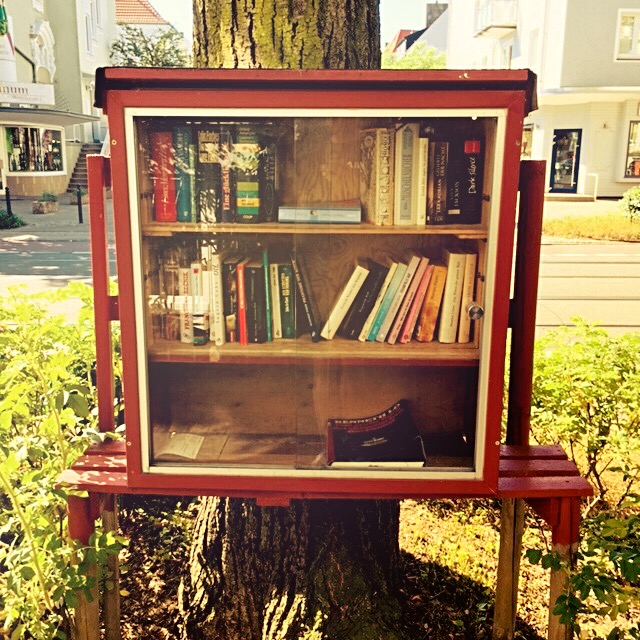Auf vielen Webseiten gibt es derzeit Informationen über die Entwicklung der Covid-19-Pandemie. Viele dieser Webseiten verbreiten einfach nur Dinge die irgendeine Originalquelle mal veröffentlicht hat und die alle anderen voneinander abschreiben. Oft wird die ursprüngliche Quelle gar nicht mehr genannt.
Zahlen, Charts und Statistiken. Wem genau hilft das?
Vor allem werden natürlich Zahlen genannt. Zahlen von Infizierten, Zahlen von Toten, Zahlen von Ansteckungsraten, Zahlen zu Abstandhaltung, Zahlen von Arbeitslosen, Zahlen für Kreditlinien, Zahlen der Börse, Zahlen von Intensivbetten, Zahlen für nahezu alles werden feilgeboten. Bestes Beispiel diese ZEIT Online Seite:
Zahlen zu Deutschland
Es liegt durchaus nahe, warum ausgerechnet die Zahlen soviel Verbreitung erfahren, sie sind aus verschiedenen Quellen plötzlich günstig verfügbar und lassen sich herrlich visualisieren. Zahlen sind eine Art der Kommunikation, die die Interpretation dem Leser überlassen könnte. Zahlen sind derzeit günstig beschaffbar und spektakulär in der derzeit beobachteten Entwicklung. Wir schauen wie magisch gebannt auf Zahlen die doch nur ein abstraktes Abbild dessen sind was sich da in Superzeitlupe vor unseren Augen entfaltet.
Doch was taugen diese Zahlen als Beitrag zu einer echten Lösung der Probleme vor die wir tatsächlich gestellt sind? Wir sehen in der Karte eigentlich nur eines, Großstädte haben mehr Probleme mit dem Virus als Dörfer. Es scheint zentral zu sein, dass ein hochfrequentierter Flughafen in der Nähe ist, damit die Voraussetzungen gegeben sind hohe Corona Infiziertenzahlen zu erreichen. Zugleich scheint die Anzahl der Infizierten auch damit zusammenhängen wieviel wirtschaftliche Aktivität in der jeweiligen Region vorhanden ist.
Aber was sind die Probleme vor die wir nun eigentlich alle gestellt sind, vom Menschenleben retten bei dem ein Nichtmediziner nicht so wahnsinnig viel tun kann einmal abgesehen?
Zahlen zu Bremen
Die echten Probleme bekommen keinen Bericht und auch keine Zahlen
Zu den meiner Ansicht nach wahrhaften Problemen gibt es keine Zahlen. Denn diese Zahlen erhebt derzeit kaum jemand. Sie sind nicht einfach da, sie sind weder kostengünstig erhältlich noch kann man sie so schön visualisieren wie die tollen exponenziellen Wachstumskurven die kaum jemand begreift.
Es fehlen Zahlen zu der tatsächlichen Anzahl von Menschen die gerade kein Einkommen mehr haben, weil sie entweder ihren Job losgeworden sind (z.B. als IT Freelancer) oder die ihr pysisches Geschäft schliessen mussten aufgrund behördlicher Anordnungen.
Es fehlen Zahlen dazu, wieviele Menschen aktuell in einer Art Hausarrest-Modus leben und vor der Herkulesaufgabe stehen Kinder in der Wohnung halten zu müssen. Sind es kleine Kinder, die keine anderen Kinder sehen dürfen derzeit, dann wird es früher oder später problematisch. Sind es schulpflichtige Kinder, dann entsteht der Spagat als Eltern plötzlich eine Art Ersatzlehrer sein zu müssen UND noch seinem Home Office Job nachzukommen.
Es fehlen Zahlen dazu, wieviele Menschen trotz der „Social Distance“ Anordnung dennoch jeden Tag zur Arbeit gehen, weil man leichtsinniger Weise diese Entscheidung den Unternehmen selbst überlassen hat, Mitarbeiter im Home Office zu belassen. Das bedeutet jeden Tag treffen sich derzeit Menschen an ihren Arbeitsplätzen, geben sich das Virus eventuell über die gemeinsam genutzte Kaffeeküche und Sanitäranlagen weiter und tragen so nicht zum Containment sondern zum Gegenteil bei.
Es fehlen Zahlen dazu, wieviele der Leute die erkranken zuvor weiter ihre Arbeitsplätze aufgesucht haben, und wieviele zuvor Home Office gewahrt haben.
Es fehlen Zahlen dazu, wieviele ältere Menschen derzeit insgesamt z.B. allein leben oder in einem Pflegeheim, und damit durch soziale Isolationsmaßnahmen in eine gefährliche Isolationslage rutschen.
Es fehlen Zahlen zu dem Gemütszustand der Bevölkerung nach bereits über 2 Wochen Lockdown. Welcher Prozentanteil kommt gut damit zurecht, wer kommt gar nicht damit klar, wie verhält es sich mit Singles vs. Paaren?
Es fehlen Zahlen dazu wie gut unsere Gesellschaft alle Mitglieder angemessen mit Informationen versorgt bekommt. Wir wissen alle, dass die Medienlandschaft in den letzten 20 Jahren zerfasert ist und jeder seine Nachrichten aus zig Kanälen beziehen kann. Wie gut erreichen die von der Regierung bespielten Kanäle die Allgemeinheit?
Es fehlen Zahlen dazu wieviel Wissen die Gesellschaft hat, ein gerüttelt maß an Hygiene tatsächlich zu praktizieren. Ist jedem klar, wie man sich richtig Hände wäscht? Wieviele wissen das nicht und brauchen daher eine Aufklärung zu dem Thema?
Es fehlen Zahlen dazu, wie gut der Handel mit seinem Warenfluss mit der Situation zurecht kommt. Gibt es eine Versorgung die stabil bleiben wird oder ist diese durch irgendwas gefährdet? Gibt es eine Ansage zur preisstabilität für Nahrungsmittel? Das ist gerade vor dem Hintergrund des Einkommensverlustes bei vielen eine Schlüsselfrage.
Es fehlen Zahlen dazu, wie es den genesenen Patienten geht. Wieviele haben dauerhafte Schäden davongetragen? Wieviele Erkrankte werden aktuell in den Kliniken behandelt und sind auf Life-Support angewiesen? In welchen Regionen bestehen freie Kapazitäten, um eventuell Nachbarländern helfen zu können?
Hier nun mein der Versuch einige echte Probleme zu erfassen. Ich möchte auf Dinge eingehen, die wir nicht mehr „sehen“, weil wir alle wie gebannt auf diese magisch-düstere Zahlenwelt blicken und nicht wissen was wir damit anfangen sollen.
Leben, Lieben, Arbeiten, Einkaufen, aber mit Firewall-Hygienelevel
Die eigentliche Herausforderung, das eigentliche Problem vor dem wir stehen lässt sich meiner Ansicht nach wie folgt beschreiben: Wie können wir unser Leben, unsere Arbeit, unsere Liebe und Soziales, all unseren Warenumschlag so gestalten, dass wir die Gefahren der Weitergabe des Virus minimieren?
Wie gestalten und etablieren wir die nötigen Firewall-Hygienelevel in jedem unserer Lebensbereiche? Mit welchen Mitteln? Was gibt es da z.B. für Alternativen den Verkauf von Lebensmitteln und Gütern des täglichen Gebrauchs, wie z.B. Kleidung und Nahrung so sicher zu organisieren, dass wir nicht die aktuellen Einkommensverteilungsmechanismen unserer Gesellschaft komplett abschalten und zerstören ohne eine Alternative dafür zu haben?
Es muss doch z.B. möglich sein, dass wir das Risiko einer Infektion im Supermarkt dadurch verringern, dass wir z.B. eine Einkaufsliste abgeben, und dann später kommen und das abholen und nicht infizierte Mitarbeiter fassen als einzige die Waren und Taschen und Lebensmittel an.
Es gibt ganz sicher einen Weg, wie mein Buchladen um die Ecke seine Bücher hygienisch auf neuem Level verkaufen kann. Für den Anfang könnte man es erstmal darauf beschränken, dass kein Kunde mehr die Bücher selbst anfasst. Klappentexte könnten durch die Verkäuferin geöffnet und vorgelesen werden. Ja, das ist beschwerlicher, aber sicher. Bevor der Laden zu machen muss sicher eine Einschränkung mit der man leben könnte.
Ohne Arbeit kein Einkommen im Kapitalismus
Unsere Gesellschaftsform ist (ob wir das nun wahrhaben wollen oder nicht) abhängig vom Kapitalismus geworden. Wir können das nicht mal eben so ändern ohne krasse Verwerfungen zu erleben. Der Zeitpunkt wird kommen, aber vermutlich wird es noch dauern bis das System auch irgendwann vollends kippt. Ich persönlich warte da schon seit über 15 Jahren drauf, aber die Welt hat einfach immer größere Schulden gemacht. Jetzt kommen wir langsam in Bereiche, wo die Schuldenbremsen (die ohnehin nur das Tempo des Schuldenmaches kontrollieren sollten) gelockert werden, und damit allen klar ist, dass das System am Ende ist.
Corona Bonds ist das Schlagwort der Stunde. Bedeutet, wir machen Schulden… der Staat leiht sich Geld bei seinen Bürgern (für feste Zinszahlungen im Gegenzug; es können auch sogenannte Zwangsanleihen ausgegeben werden), um den Bürgern/Firmen dann Kredite z.B. über die KfW anbieten zu können. Es entbehrt nicht eines gewissen Zynismus, dass man Feuer mit Feuer bekampft. Es ist mehr die Sucht eines Drogensüchtigen, der jetzt eine große Dosis Schulden benötigt, um von der ganzen Misere abzulenken bzw. die Finanzflüsse bloss nicht ins Stoppen geraten zu lassen.
Wir haben seit Jahrzehnten akzeptiert, dass Einkommen für Habenichtse ausschließlich über Arbeit verteilt werden. Wenn man dieser Arbeit nicht mehr nachgehen kann, hat man kein Einkommen mehr. Kapitalbesitzer haben mit genug Lobbyarbeit die Steuern auf Kapital quasi unbedeutend gemacht, es gibt nur noch die Einkommensteuer und Umsatzsteuer. Es wurden zwar auch für Habenichtse ein paar Bypässe gelegt zu diesem brutalen System, die dann so tolle Namen wie „Hartz 4“ tragen, aber der Fakt ohne Arbeit kein Geld bleibt. Wir haben zugleich akzeptiert, dass jeder über sein Einkommen selbständig verfügen und entscheiden sollte und damit die für ihn persönlich wichtigen Dinge selbst regeln und bezahlen soll, z.B. Wohnung, Krankenversicherung, Nahrungsmittel um mal die drei wichtigsten Posten zu nennen.
Wenn wir jetzt der Gesellschaft (die nicht über nennenswert Kapital verfügt) die Einkommen entziehen (weil sehr vielen die Arbeit entzogen wird, weil sie gefeuert werden), dann rührt das an den Grundlagen der Existenz jedes Einzelnen. Das Überleben ohne Einkommen ist im Kapitalismus nur begrenzt möglich. Wohnen, Krankenversicherung und Nahrung sind nur über Einkommen zugänglich. Wer also nicht direkt beim Staat angestellt ist und sein Einkommen garantiert bekommt, der steht in Kürze ganz doof da.
In der Krise sollten sich Werte bewähren
Wenn ich mir die Medienlandschaft und die Sprache in letzter Zeit anschaue, dann schaudert es mich. Es tauchen vermehrt Ansichten auf, die bereitwillig noch mehr Freiheitsrechte und Grundrechte opfern würden, um die Krise loszuwerden. Gleichsam wie in den religiös-kultischen Ritualen vergangener Zivilisationen ofern wir Grundrecht über Grundrecht und Freiheit über Freiheit auf dem Altar der Krisenbewältigung in der Hoffnung es möge etwas bewirken.
Ich sehe völlig ein, dass wir derzeit als Notmaßnahme eine Kontaktvermeidung soweit nur irgendmöglich praktizieren sollten, um die Anzahl der zu versorgenden Patienten unter dem Limit an Notfallversorgungsbetten zu halten. Das ist quasi der letzte Ausweg den wir gerade haben, um die Ansteckungen zu verringern. Diese Maßnahmen sind derzeit wohl unausweichlich, wenn wir nicht mutwillig Menschenleben gefährden wollen. Damit bin ich einverstanden!
Ich denke jedoch dass wir zugleich nicht nur in Richtung einschränkende Maßnahmen nachdenken sollten, sondern auch in Richtung der ermöglichenden Maßnahmen. Kontakte die wir als soziale Wesen unausweichlich in der Gesellschaft etabliert haben und für so profane Dinge wie Einkaufen von Waren zur Lebensmittelversorgung benötigen, müssen auf ein neues, sicheres Hygieneniveau angehoben werden.
 Aktuell geht es darum den Aufenthaltsort und Kontakte der Menschen zu tracken oder zu trace’n.
Aktuell geht es darum den Aufenthaltsort und Kontakte der Menschen zu tracken oder zu trace’n.
- https://www.sueddeutsche.de/digital/coronavirus-smartphone-app-tracking-ueberwachung-1.4869845
- https://www.ccc.de/de/updates/2020/contact-tracing-requirements
- https://www.youtube.com/watch?v=rrHp8pUiu3U
- https://gi.de/themen/beitrag/thema-im-fokus-standortdaten-zur-corona-bekaempfung
- https://www.ndr.de/nachrichten/info/28-Auch-die-Atemluft-spielt-eine-Rolle,audio664160.html
- https://www.spiegel.de/netzwelt/apps/coronavirus-bundesregierung-haelt-tracing-app-fuer-ganz-zentralen-baustein-a-fa38dc51-a141-41cf-bda1-f658068ca1a1
- https://twitter.com/hdsjulian/status/1245331455787651072
- https://twitter.com/sixtus/status/1247118266507591683
- https://bulletin.cert.ccc.de/papers/linus_supercut.mp4
- https://www.deutschlandfunk.de/smartphone-tracking-apps-im-kampf-gegen-covid-19-und-ihre.684.de.html?dram:article_id=474053
- https://www.pepp-pt.org/
- https://www.golem.de/news/ccc-contact-tracing-als-risikotechnologie-2004-147766.html
- https://www.zeit.de/digital/internet/2020-04/robert-koch-institut-app-coronavirus-forschung-daten/
Es soll bald eine App geben die das tut. Meine Ansicht dazu (vor allem als App Entwickler) ist recht eindeutig:
- Ich halte die App Bemühungen für eine Übersprungshandlung der Techies. Wenn man verzweifelt ist, dann versucht man halt mit den Tools die man hat irgendwas zu tun, was sinnvoll erscheint. Oder auch „If the only tool you have is a hammer, everything starts to look like a nail.“
- Die App zielt darauf ab Buchzuführen über unsere Kontakte. Dabei wird übersehen, dass wenn wir in erster Linie die Kontakte minimieren, das Problem gar nicht entsteht, was die App lösen will. Sinniger ist es den Leuten einzutrichtern für überschaubare Zeit Kontakte generell zu meiden.
- Die App möchte hier also sowas wie ein Reparaturmechanismus für falsches Verhalten sein. Wer sich nicht an das Vermeiden von Kontakten hält, der soll dann zumindest eine Warnung bekommen. So schaut doch keine Lösung aus, oder?
- Eine solche App kann wegen mir sonstwas behaupten wie sorgsam sie mit meinen Daten umgeht, ohne offenen Quellcode und Nachprüfbarkeit lasse ich mich nicht tracken. Punkt. Auch wenn die Daten der App selbst vielleicht mein Verhalten pseudonymisiert verarbeitet, lässt sich eine Verbindung zu meiner Person über weitere Apps mit etwas Aufwand herstellen. Dafür reicht es z.B. schon aus, dass ich über eine bestimmte IP-Adresse z.B. das Wifi-Netz einer Freundin mein Gerät nutze, um zum Zeitpunkt der App Nutzung auch meinen Standort zu ermitteln. Zudem ist der Erfolg der App dann plötzlich doch wieder von zig menschlichen Faktoren abhängig, deren Defizite sie eigentlich kompensieren möchte. Jemand, der erkennt, dass der erkrankt ist, muss in der App aktiv seine Trackingdaten rausrücken, und zwar entweder an ALLE Nutzer der App direkt oder an eine zentrale Stelle. Dann soll angeblich auch noch sichergestellt sein, dass niemand mal so eben vorgibt infiziert zu sein, also soll es ein Arzt absegnen. Der nächste Bottleneck und menschliche Faktor.
- Doch all diese Fails könnte man ja vielleicht noch lösen, durch Goodwill der Nutzer, durch schnell handelnde Ärzte, etc. aber dann kommt der größe Schwachpunkt dieser Lösung. Sie funktioniert nach dem Gesetz von Metcalfe (Metcalfe’s Law), ihr Nutzen entsteht erst, wenn nahezu ALLE Menschen mitmachen. Es ist wie bei den Faxgeräten damals, einem selbst nutzt es gar nichts, wenn nicht auch alle anderen eines haben. Doch diese Verbreitung zu erzielen braucht Zeit und eine Menge Überzeugungsarbeit.
- Doch damit ist das Problem nicht zu Ende, denn längst nicht alle haben ein Smartphone. Es ist mal wieder nur aus der elitären Techie-Perspektive des privilegierten Western Civilization Nerd gedacht. Und wenn wir alle Smartphones hätten, dann müssten immer noch alle dran denken das gerät auch überall mit hinzunehmen. Allein das schlägt schon fehl, kann ich aus eigener Erfahrung sagen.
- Die Frage die wie der Elefant im Raum steht lautet: Warum nicht stattdessen in Aufklärung investieren wie bei HIV damals? Aufklärung über den Zusammenhang wie man sich anstecken kann, wie man es vermeidet, und welche Hilfsmittel angeraten sind, wir mehr erreichen als diese App. Denn die App kann ja maximal den Fail etwas versuchen einzufangen, dass jemand sich nicht an die Kontaktvermeidung gehalten hat wie er sollte.
- Die Schöpfer und Supporter der App ziehen sich auf den Standpunkt zurück, dass es eine „Nächstenliebe“-App ist, weil die Personen die die Apps nutzen ohnehin nicht selbstgeschützt werden sondern nur Dritte schützen könnten. Das macht es aus meiner Sicht nochmal unwahrscheinlicher, dass Leute die App nutzen, denn aus „Nächstenliebe“ allein werden sich viele die App erst gar nicht installieren. Irgendein Nutzen sollte da schon für den Nutzer selbst unmittelbar bei rausfallen. Das sage ich aus Erfahrung mit Apps im AppStore als App Developer.
- Fazit: Eine App kann das Problem nicht lösen vor dem wir stehen. Möglichst rasche Aufklärung könnte etwas bewirken. Diese App ist die luzide Idee, mit Technologie ein soziales Problem lösen zu können. Das funktioniert sehr oft nicht, denn soziale Probleme löst man besser durch Aufklärung und Prävention statt durch nachträgliche Reparaturversuche unangemessenen Verhaltens.
- Als App Entwickler bin ich skeptisch, ob es zum einen technisch machbar ist – da es krasse Restriktionen für Hintergrundaktivitäten gibt – und ich glaube nicht, dass Apple eine solche App (die eben durchaus Privacy invasive ist) überhaupt in den AppStore lässt. Die App wird es also vermutlich gar nicht durchs Review schaffen oder die technischen Limitierungen aushebeln können.
- Die schlimmste Folge einer uneingeschränkten Unterstützung dieser App Idee ist meiner Ansicht nach der durch den CCC abgesegnete Dammbruch, dass wir Menschen an eine Tracking App gewöhnen. Mag vielleicht bei einem ersten Release der App noch alles in Ordnung sein mit dem Code, aber wer sichert das bei dem nächsten Update ab? Aber noch viel schlimmer ist, es wird andere Apps (über die niemand die Kontrolle hat) geben die u.U. nicht diese Mühe in Privacy stecken, und Kunden werden leicht die falsche App herunterladen die dann unsicheres Tracking macht. Für mich bleibt es dabei, gar nicht erst Daten sammeln, die nicht gebraucht werden. Eine kleine Änderung an der App kann dazu führen, dass die Daten plötzlich doch alle zusammengeführt werden. Vielleicht weil ein Virologe eine tolle Idee hat wie man mit den Daten besseren Einblick in das Virus bekommen kann. Würde dann noch jemand im nachhinein die Verwendung der Daten effektiv untersagen können? Es gibt eine explizite Warnung von Edward Snowden vor diesem Schritt. (Video dazu)
- Die Verfechter der App stellen sich zudem auf den Standpunkt „Wenn wir es nicht machen, macht es ein anderer.“ das ist ein Argument, dass mir nur zu bekannt vorkommt. Schon Joseph Weizenbaum hat sich gegen eine solche Argumentationslinie streng verwehrt.
- Die Verfügbarkeit der App könnte auch zu dem gleichen Effekt führen wie wir ihn schon bei Airbags und Fahrradhelmen gesehen haben, nämlich ein noch leichtsinnigeres Verhalten als bislang bereits. Gerade weil diese App ja zentral die „Reparatur“ von eigentlich problematischem Verhalten zum Gegenstand hat.
- Noch ein Punkt der an dem Konzept überhaupt nicht durchdacht zu sein scheint, WAS tut derjenige der eine Benachrichtigung bekommt, er hätte „Kontakt“ gehabt? Auf welcher Basis soll der Nutzer dann mit dieser Information etwas anfangen? Glaubt wirklich jemand, dass diese Person dann nur aufgrund einer Benachrichtigung von selbst in Quarantäne geht oder das Gesundheitsamt anruft? Ich würde mir dreimal überlegen, ob ich einer bloßen Nachricht einer App über den Weg trauen würde und allein auf der Basis einer Push-Notification meine weiteren Lebensentscheidungen treffen würde. Wer verhindert, dass nicht jemand einfach mal 50 Prozent der App Nutzer eine solche Nachricht sendet, um diese zur „selbstgewählten“ Quarantäne oder zu einem Test zu bewegen? Nope, ich würde mein Wohl und Wehe nicht in die Hand einer undurchschaubaren IT Infrastruktur legen wollen. Es ist das perfekte Massenbeeinflussungsdevice. An derartigen IT Produkten möchte ich keinesfalls mitarbeiten auch wenn die Gesellschaft für Informatik da zu keinem wirklichen Vorgehen rät.
- Und lasst euch bitte nicht hinters Licht führen, es werden weit mehr Daten als nur die von euch per BT gesendeten ID’s auf einem zentralen Server erfasst werden müssen. Mindestens das Push-Token von eurem Gerät ist notwendig wenn man eine Nachricht bekommen soll. Oder aber die App muss im Hintergrund mindestens zweimal am Tag auf einem Server nachsehen, ob dort Daten als infiziert markiert wurden, die die App selber als Kontakte im Logbuch stehen hat und dann eine Local Notification raushauen können. Jeder dieser Calls zum Server, um zu gucken, ob infizierte Kontakte vorliegen, erlaubt Rückschlüsse von WO dieser Call kommt, denn da gilt wie mit anderen TCP/IP Paketen auch, die gehen durch das normale Netz. Zugleich wird die Serverinfrastruktur auch ein wenig skalieren müssen, wenn man plant 50-70 Millionen Leute zu erreichen, die dann zweimal pro Tag einen wachsenden Berg an Daten herunterladen müssen. Das sind dann schon bis zu 140 Millionen Server-Calls sagen wir mal jeder davon zieht 1024 Byte Daten, dann sind das 70 Mio KB bzw. 68 Tausend MB bzw. 67 GB pro Tag. Die Menge an Daten die geladen werden muss wird aber wohl eher bei dem 100-fachen liegen. Auf jeden Fall wird jede dieser Apps halt auch permanent „nach Hause telefonieren“ müssen, da endet dann auch die Diskussion über Privacy. Über GeoIP-Verfahren lässt sich mit so einer App prima die App-Durchdringung in den geographischen Regionen beurteilen. Ruft eine App die Daten fast nur im heimischen Wifi ab aber plötzlich dann aus dem Wifi der Freundin, dann ist daraus auch ablesbar, dass ihr einen Kontakt habet gerade.
- Gegenvorschlag: Warum macht ihr nicht eine App, die einen akustischen oder rein haptischen (z.B. Vibration) Alarm auslöst, wenn man länger als 15 Minuten in der Nähe von jemandem verbringt, der die App installiert hat, denn Prävention ist doch viel besser als hinterher Containment zu versuchen. Da muss niemand informiert werden und eventuell verhindert man noch vor Ort den vermeidbaren Kontakt. Man könnte das auch noch kombinieren mit einem Alarm, der zum Tragen einer Maske auffordert, sobald ich anfange neue BT Signale in der Umgebung zu entdecken (was auf Bewegung unter Menschen schliessen lässt.)
Gleichzeitig reichen derzeit Gesundheitsämter vertrauliche Daten über Infizierte an die Polizei weiter und brechen damit grundlegende Zusicherungen an Datenschutz (so passiert in Bremen und Baden-Württemberg). Offenbar meinte jemand das sei schon okay, dieses Grundrecht mal zu opfern, in der Hoffnung damit Ansteckungen zu verhindern. Das Verhalten bleibt offenbar folgenlos für die betroffenen Behördentäter.
Gerade jetzt in der Krise sollten wir uns doch unsere Werte als Orientierung hernehmen und über Lösungen nachdenken, die unsere Werte schützen und erhalten. Stattdessen beobachte ich eine große Bereitschaft, ohne Nachzudenken Werte einfach mal wie in einem religiös-kultischen Ritual symbolisch zu opfern. Der einzige Gegenwert des Opfers: Hoffnung.
Warum schaffen wir nicht unsere eigene Welt der Hoffnung in Übereinstimmung mit unseren Werten, die uns als Menschen ausmachen und vom Raubtier unterscheiden? Warum stecken wir nicht mehr Energie in Überlegungen wie ich sie oben versucht habe anzustellen? Lasst uns doch mal drüber nachdenken, wie wir diese Krise als Chance nutzen können.
DIY-Hoffnung und Chancen der Situation
Ganz offensichtlich sind in dieser pandemischen Situation einige Menschen die bis dato als Blockierer in Erscheinung traten, plötzlich bereit sich mit Alternativen zu beschäftigen. Zum Beispiel Universitäten, die bislang Prüfungen per Videokonferenz nicht mal in Erwägung gezogen haben, weil einfach alles auf bestehende Präsenzstrukturen ausgerichtet ist. Schulen bemerken, dass ihnen die gesamte Erfahrung und die Tools fehlen, um auch ohne den Klassenraum in Kontakt zu bleiben. Hilflose Notlösungen aus WhatsApp-Gruppen treten an die Stelle jahrelang blockierter Lösungen. Der Digitalpakt Schule ist ein bürokratisches Monster geworden. Statt jeder Schule eine sinnvolle und erprobte Lösung hinzustellen, soll jede Schule ein eigenes Konzept einreichen. Welcher Schulleiter und welcher Lehrer hat dafür die Zeit und das Fachwissen? Was für ein Fail!
Vielleicht ergreifen nun Personen, die bislang eher durch eine unerschütterliche Blockadehaltung auffielen, die Chance zum Wandel und verpassen ihrem Wirkungsumfeld eine passende Dosis Kommunikationsmittel, die auch eine ortsungebundene Durchführung von Tätigkeiten erlauben, und somit einen Vorteil der Digitaliserung nutzen. E-Learning scheint vor einer Renaissance zu stehen wenn diese Krise dazu genutzt wird.
Zugleich könnten wir auch einmal den Blick auf unseren Wandel im Warenverkauf richten. Wollen wir weiter hinnehmen, dass Amazon zum Rückgrat unserer Versorgung wird. Wollen wir Amazon einfach alles kampflos überlassen? Gibt es keine europäische Antwort auf den Vertriebsriesen? Könnte IT den lokalen Raum nicht auch stärken und zugleich ein einträgliches Geschäft sein?
Und was ist mit den ganzen verdrängten Krisen?
Pflegekrise, Bildungskrise, Klimakrise, Schulden- aka Finanzkrise, Korruption in Macht & Politik (z.B. die nie gewählte EU Kommissionspräsidentin v.d.Leyen, der Steuergeldveruntreuende Andreas Scheuer), Demokratiekrise, Europakrise, Flüchtlingskrise, …
Wir brauchen einen DIY-Hoffnungsausblick der deutlich über die Corona Pandemie hinausreicht, denn die eigentliche Krise ist die Kapitalismuskrise bzw. dessen herannahendes Ende.
Wir brauchen Gegenentwürfe zu Krankenhäusern als Profitcenter, und wir brauchen Gegenentwürfe zu Hausärzten als Fallpauschalendurchschleuser und Medikamente sind kein Spekulationsobjekt sondern eine Erfindung die der Menschheit insgesamt zu Gute kommen muss.
Wir brauchen Alternativen zu einem ÖPNV, bei dem der Weg zur Arbeit und zurück soviel Geld kostet wie zwei Brote oder eine Packung Zigaretten, der Parkraum für das SUV in der Wohnstrasse jedoch gratis ist und es dicke Förderprämien für die Anschaffung von Automobilen gibt (Abwrackprämie, E-Auto-Prämie, etc.) sowie kostenlosen Strom für die PKW.
Wir brauchen stattdessen einen Umbau unserer Städte in Fußgängerfreundliche und Fahrradfreundliche Lebensräume, eine Förderung der Anschaffung von Fahrrädern und der Abschaffung von Parkraum. Allein schon um die Feinstaub und Stickstoffbelastungen der Stadtluft zu verringern.
Wir brauchen Alternative Entwürfe zu einem Bildungssystem das nur noch akademische Lehrpläne reproduziert und stattdessen benötigen wir Orte der Zusammenkunft in denen gelernt wird warum Lernen Spass macht, in denen man sich mit der echten Welt beschäftigt mit unstrukturierten Problemen voller Ausnahmen. Die Bildung muss raus aus ihrer akademisch geprägten Blase in der es nur um wohldefinierte Probleme geht, die aber an der Realität vollkommen vorbei gehen.
Wir brauchen eine Aufklärung über die dunklen Mechanismen des Kapitalismus. Wir müssen darüber aufklären welche Rolle das Geld spielt in diesem Sytem. Wir müssen erklären, welches Geschäftsmodell Versicherungen zugrunde liegt und wie das unser aller Leben beeinflusst.
Wir brauchen eine Finnanztransaktionssteuer auf Hochfrequenz-Handelsvolumen. Auf alle Finanzderivate und alle Börsenhandlesformen die nicht unmittelbar verbriefte Anteile an Unternehmen handeln.
Wir brauchen eine massive Nachhaltigkeitswende, in der wir uns von Plastikprodukten & -abfällen endgültig verabschieden und stattdessen Langlebigkeit von Gütern und ein Recht auf Reparatur gesetzlich verankern mit passenden Garantieregelungen.
Wir brauchen endlich eine massive Aufklärung und Diskussion darüber, dass wir derzeit unsere aller Glück von der Verteilung der Einkommen über Arbeit abhängig machen. Konzepte wie ein bedingungsloses Grundeinkommen könnten eine Renaissance des 21. Jahrhunderts auslösen, wenn wir uns endlich vom Wachstumszwang und quantitativem Wachstum lösen und stattdessen in qualitatives Wachstum und die Köpfe unserer Gesellschaft investieren.
Krise ist eine Ausnahmesituation: Don’t try to be perfect in a crisis.
Nicht zuletzt ist diese Krise eine ganz persönliche Challenge für jeden Einzelnen von uns. Eine Prüfung, ein Stresstest für unsere Zuversicht in die Zukunft. Entsprechend sorgsam sollte man mit sich selbst in dieser Krise umgehen.
Update 30.4.2020
Mittlerweile hat sich einiges bewegt. In Italien beginnen die Restaurantbesitzer neue Wege zu finden wie man unter hohen Hygienestandards das soziale Erlebnis des gemeinsamen Essens im Restaurant realisieren kann, mit dem Einsatz von Plexiglaswänden auf dem Tisch und zwischen Tischen. Das geht genau in die Richtung die man weiter ausbauen sollte. Hygienelevel auf Firewallniveau heraufsetzen und dann wieder „Normalität“ umsetzen.
Was die CoronaApp angeht bin ich wenig überrascht. Es gab ein großes Durcheinander und am Ende landet das Ganze Ding als Auftrag bei Telekom und SAP (dem neuen Corona Collect Betreiberkonsortium). Es hätte schlimmer kommen können, z.B. mit cellebrite und Palantir. Daher bin ich jetzt beruhigt, dass zumindest keine neue Überwachungsinfrastruktur dabei rausfällt.
Die Kosten werden in keinem auch nur annähernd vertretbaren Verhältnis zum Nutzen stehen, aber bei welchem der Großprojekte der Regierung war das schon der Fall in letzter Zeit? Der Berliner Großflughafen BER ist da nur ein Beispiel. Gerade bei IT Projekten wird großflächig Steuergeld in den Sand gesetzt.
Ich rechne nicht damit, dass dieses Steuergeld sich als Investition je bezahlt machen wird. Man sollte es als Subvention für Telekom und SAP ansehen, oder als Ausgaben für PR, die den Anschein des Handelns zum Gegenstand hat.
Dieses Bild hier fand ich in den Weiten des Netzes:

Verbessertes Meme für Germany:

Es bringt gut zum Ausdruck, was passiert. Die Sehnsucht nach der EINEN einfachen Lösung aller Probleme ist so groß, dass man ihr einfach nicht widerstehen kann. Die CoronaApp ist so gesehen der Sirenengesang, dem nur widerstehen kann, wer sich gut auf dem Boden der IT Technik geerdet hat durch Erfahrung und Knowhow sowohl in Kryptografie als auch in realistischen Abschätzungen von Komplexität und Machbarkeit. Die weitere „Erdung“ sollte man durch Vernunft erhalten, wenn man darüber nachdenkt, ob dieses Werkzeug der richtige Weg ist für ein biologisches Virus.
Ansonsten ist halt eingetreten, was ich als einzig sinnigen Weg gesehen habe: Apple/Google müssten es wenn machen. Dort existiert jetzt eine Zusammenarbeit: „Apple and Google partner on COVID-19 contact tracing technology“.
Mir tun dennoch die armen Developerseelen leid, die die Erwartungen an diese „magische Lösung“ unter den Rahmenbedingungen von Apple/Google umsetzen werden. Denn die allgemeine Erwartung wird unerfüllbar bleiben, gleichsam einer unerfüllbaren Sehnsucht, wird man die Erwartungen managen müssen und die Aufmerksamkeit auf andere Felder lenken müssen, um die Situation zu entschärfen.
Nein, ich beneide Telekom und SAP nicht. Aber hey, wie wäre es denn, wenn die Telekom in der krise ihre Stärken auspackt und einfach mal anfängt Glasfaser zu legen? DAS würde nämlich einen echten Beitrag zur Krisenbewältigung bedeuten. Siehe auch „Europe Broadband status — Market forecast by 2020 and 2025“ und „New Fibre Market Panorama 2020“
Update 16.6.2020: Corona App Veröffentlicht
App ist herunterladbar hier. Kleiner Reddit Thread dazu. Pressekonferenz-Video.
Offizielle Webseite: https://www.coronawarn.app/
Die Kosten für die App (ca. 20 Mio EUR) verdeutlichen sehr schön was Softwareentwicklung eigentlich kostet. Vielleicht denken einige da auch mal drüber nach, wenn sie jetzt sehen, dass die App kostenlos bereitgestellt wird. Die 20 Mio EUR sind halt auch ein wunderschönes Subventionsprogramm für Google und Apple, denn diese kostenlose App fügt den Geräten ja eine Funktion hinzu, die viele Bürger offenbar als nützlich ansehen. Damit steigt der wahrgenommene Wert des Gerätes. Apple und Google reiben sich die Hände, soviel steht fest.
Ich bleibe bei meinem Urteil: Die App kann keinen wesentlichen Beitrag leisten in Bezug auf die Pandemie.
Dennoch sehe ich die App Entwicklung (i.e. auch durch SAP / Telekom) durchaus auch sehr positiv in Bezug auf die staatlichen Digitalisierungsprozesse in Deutschland. Aus meiner Sicht wurde das erste Mal der Weg beschritten „Public money, public code.“ (eine langjährige Forderung der NGO’s im Bereich Technologie), somit wurden völlig neue Prozesse insbesondere in Bezug auf die Transparenz erstmals beschritten. Zudem wurde die App als Anlass erfolgreich genutzt, Sensibilisierung für den Datenschutz weiter voranzutreiben (wenn auch nur durch eine Menge Druck durch NGO’s wie z.B. CCC und andere).
Leider ist der mögliche Kollateralschaden derzeit noch nicht absehbar, denn die Gewöhnung an eine „Schnüffel-App“ – nicht wegen der App selbst, sondern wegen der Technik die Apple/Google nachgerüstet haben – wird vermutlich noch Konsequenzen haben. Derzeit ist die Freiwilligkeit nicht per Gesetz festgehalten und auch die Zweitverwertung der Tracing-Features die Apple/Google eingebaut haben könnte noch eintreten.
Update 23.6.2020
Es scheint, dass man mit der Warn App nicht so wirklich repräsentative Präsenz in der Bevölkerung erlangen kann. Das ist erinnert mich so ein wenig an den Menschen, der im Dunkel seine verlorenen Hausschlüssel unter einer Straßenlaterne am suchen ist, als ihn jemand fragt, warum er denn nicht den Rest der Strasse absucht, sagt der, „aber da ist es ja dunkel“.
Damit hätte sich dann wohl ein weiteres Problem der App manifestiert, dass es eigentlich eher das Hellfeld ausleuchtet, statt das Dunkelfeld, sprich, die wohlhabendere Bevölkerung (mit vermeintlich geringerem Risiko für Virusverbreitung), die durch größere Wohnungen, genug Equipment für Homeschooling, Home Office White Collar Workers etc. geprägt ist, ist mit dem iPhone unterwegs. Die ärmere Bevölkerung (mit vermeintlich höherem Risiko für Virusverbreitung) erreicht der „Scheinwerfer“ Corona-Warn-App erst gar nicht, weil kein Geld für solche Technik vorhanden ist und auch das Wissen um die App nicht so verbreitet ist. Das führt dann im Endeffekt dazu, dass die App gerade dort, wo es deutlich schwieriger ist Containment und Hygieneregeln wie genug Abstand zu betreiben, möglicherweise nicht wirklich zum erwünschten Einsatz gelangt.
Angeblich gibt es auch noch keinen einzigen Fall eines gemeldeten positiven Testergebnisses bei mittlerweile ca. 12 Mio Downloads der App. Ich bin kein Statistiker (wenn doch würde ich da bei 12 Mio Nutzern schon mittlerweile eine erste Meldung erwarten; irgendein Berliner Hipster dürfte doch mittlerweile seinen Test hochgeladen haben, oder?), aber ich bin Entwickler und als Entwickler hätte ich zumindest EINEN Echttest einmal selbst ausgeführt und auf offiziellem Weg testweise veröffentlicht nachdem das Ganze in den Stores verfügbar ist, um zu gucken, ob auch wirklich die Keys der Infizierten korrekt ausgeliefert werden und man wirklich nichts vergessen/übersehen hat im Deploymentprozess. Aber vielleicht ist das ja bereits passiert und man hat das vor dem offiziellen Release schon ausreichend testen können irgendwie.
Why do I blog this? Ich bin es leid mit ansehen zu müssen wie gerade ein Zeitfenster aufgeht, das möglicherweise ungenutzt wieder verschwinden und sich schließen wird. Ein mögliches Zeitfenster für Veränderungen. Wenn wir Pech haben, dann holt ausgerechnet(!) ein Sozialdemokrat die Kriegsrethorik raus und entscheidet sich für die „ganz große Bazooka“ um das Problem mit Gewalt zu lösen statt mit Verstand. Es schmerzt mich zu sehen wie völlig offensichtlich inkompetente Entscheider in der Politik die Chance in diesem Zeitfenster nicht zu erblicken in der Lage sind. Hoffen wir dass noch irgendwer mit Grips in der Birne in der Regierung die Gunst der Stunde sieht und endlich anfängt über Corona/Covid-19 hinauszudenken.
Update 21.6.2020: Andere – z.B. Sibylle Berg in „Pandemie-Nachwehen: Den Irrsinn vor Augen“ – sehen das wohl ähnlich.







